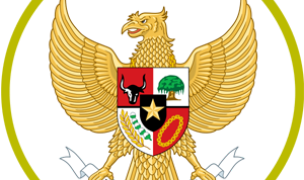 10 Terms
10 TermsHome > Terms > English, UK (UE) > Battle of Genale Doria
Battle of Genale Doria
The Battle of Genale Doria was a battle on the "southern front" fought during the Second Italo-Abyssinian War. The battle consisted almost entirely of air attacks by the Italian Royal Air Force (Regia Aeronautica) against an advancing and then withdrawing Ethiopian army under Ras Desta Damtu. The battle was primarily "fought" in the area along the Genale Doria River valley between Dolo and Negele Boran.
Technically, Ras Desta Damtew launched an Ethiopian offensive against the Italian forces in Somaliland. However, General Rodolfo Graziani carried out his active defence so vigorously that it became an offensive. On 3 October 1935, when De Bono launched his invasion on the "northern front," Graziani was logistically prepared for a march on Harar in the south. However, Graziani's forces were still relatively few in number and they faced an enemy numbering approximately 80,000 strong. In addition to numbers, the soldiers of the two principle Ethiopian armies on the "southern front" were said to be better trained and better equipped than the soldiers of the armies De Bono faced in the north. Worse for Graziani, the Ethiopian commanders in the south were young, progressive, and loyal individuals dedicated to Haile Selassie's cause.
On 13 November, Graziani moved his headquarters to Baidoa. The 29th "Peloritana" Division was still the only full division available to him. By mid-November, limited elements of the Libyan Division and the 6th "Tevere" Blackshirt Division were in Somalia. As additional forces arrived later in November, Graziani formed them up at Dolo near the border.
By early December, Graziani's forces were in a state of readiness on the "southern front." All was prepared to launch a counterattack against Ras Desta's offensive and Graziani's new commander, Marshal of Italy Pietro Badoglio, noted this preparedness. Badoglio sent Graziani a telegram reminding him of his "strictly defensive" role. Graziani feigned compliance with Badoglio but communicated privately with Rome and urged that he be given authorization for an offensive. Mussolini gave Graziani permission for "a limited attack in the case of absolute necessity" and Graziani took this as the authorization he needed.
Even as the Ethiopians advanced, Graziani continued his preparations. He organised his forces into three columns. On the Italian right was the first column which was to advance up the valley of the Genale Doria River. In the centre was the second column which was to advance towards Filtu. On the left was the third column which was to advance up the valley of the Dawa River. All three columns had better than average access to motor transport and were equipped with a few tanks. They could realistically be thought of as "mechanized" by the standards of 1936. In addition to the three columns on the ground, Graziani was ready to unleash the 7th Bomber Wing of the Royal Air Force.
On 12 January, the Royal Air Force started the Italian response to the Ethiopian advance by dropping two tonnes of mustard gas on the Ethiopians. For three days the advancing Ethiopians were attacked incessantly from the air. The Ethiopian force that ultimately reached the first Italian outposts already had the fire gone from its belly. The combination of air attacks, a long march through a desert, inadequate rations, as well as dysentery and malaria had shattered the morale of Ras Desta's army.On 15 January, when the three Italian columns advanced, there was little incentive left for Ras Desta's shattered forces to stand and fight. Even so, the Ethiopians did stand and they attempted to hold their ground in the area where the Ganale Dorya River and the Dawa River joined to become the Juba River. This area northwest of Dolo where the Ethiopians stood to fight caused the Italians to refer to this portion of the battle as the "Battle of the Three Rivers." The Italian mechanised columns responded with a series of out-flanking manoeuvres which quickly compelled the Ethiopians to withdraw and leave the field of battle. Unfortunately the weary army could not withdraw fast enough as it was again assaulted from the air. The Ethiopians could find no relief and their withdrawal quickly became a disorganised retreat. In this unequal chase, the Ethiopians were on foot and the Italians were generally in motor vehicles. The Italians blocked the few wells that lay along the way and closely pursued the parched Ethiopians. Ras Desta's army soon disintegrated under these assaults. Oddly enough, having taken the ground intended and having reached Wadera, Graziani now cautiously withdrew his forces approximately 60 miles to Negele Boran to allow food and munitions to catch up. The "southern front" was the subordinate front and the war on the "northern front" was not yet going well for the Italians. The Christmas Offensive was not yet over and the First Battle of Tembien was only about to start.
- Part of Speech: proper noun
- Synonym(s):
- Blossary:
- Industry/Domain: History
- Category: World history
- Company:
- Product:
- Acronym-Abbreviation:
Other Languages:
Member comments
Terms in the News
Featured Terms
RQ-170 Sentinel
Nick-named the Beast of Kandahar, the RQ-170 Sentinel is an unmanned aerial vehicle (UAV) developed by Lockheed Martin for the Central Intelligence ...
Contributor
Featured blossaries
stanley soerianto
0
Terms
107
Blossaries
6
Followers
Indonesia Football Team
 10 Terms
10 Terms
Marouane937
0
Terms
58
Blossaries
3
Followers
10 Most Bizarre Houses In The World
 10 Terms
10 Terms
Browers Terms By Category
- Advertising(244)
- Event(2)
Marketing(246) Terms
- Health insurance(1657)
- Medicare & Medicaid(969)
- Life insurance(359)
- General insurance(50)
- Commercial insurance(4)
- Travel insurance(1)
Insurance(3040) Terms
- Wedding gowns(129)
- Wedding cake(34)
- Grooms(34)
- Wedding florals(25)
- Royal wedding(21)
- Honeymoons(5)
Weddings(254) Terms
- Aeronautics(5992)
- Air traffic control(1257)
- Airport(1242)
- Aircraft(949)
- Aircraft maintenance(888)
- Powerplant(616)


